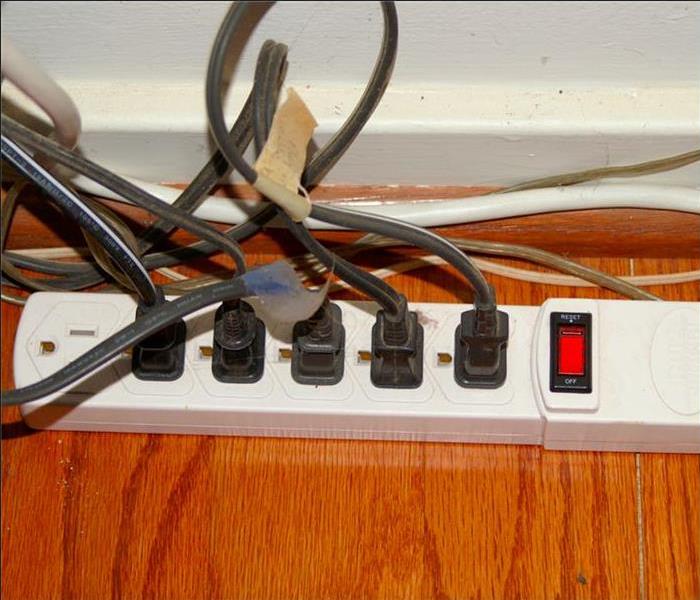Power Strip Safety
12/11/2020 (Permalink)
With the endless amount of accessories, appliances, and tools that are becoming more and more common in your household, it can sure be a hassle figuring out where to plug all of them in at. Many homeowners find themselves always swapping plugs or using devices such as a power strip. While a power strip can help you out in many situations, it is the mistake of relying on them too much that causes problems. Follow these tips below to ensure your safety when using a power strip in your home.
- Use only light load appliances on power strips. That includes computers, lamps, clock, etc.
- Ensure that the power strip you purchase has an internal circuit breaker. This is a very important safety measure that is designed to prevent property loss and risks of fire.
- Use power strips sparingly. They aren't designed to maintain a load for an extended period of time, and can easily overheat quickly if used to often.
- DON'T plug a power strip into another power strip (term is called "daisy chaining"). Doing this will short out appliances and highly increase the risk of an electrical mishap.
- DON'T use power strips in moist or potentially moist areas. DON'T put them in kitchens, utility rooms or basements.
- DON'T continue to use a power strip if it feels hot.
- NEVER cover, staple, tack or nail a power strip to anything. Covering can smother the strip, and provide ample flammable material in the event of a power strip failure. Puncturing can harm the cords, making room for dangerous situations.





 24/7 Emergency Service
24/7 Emergency Service
